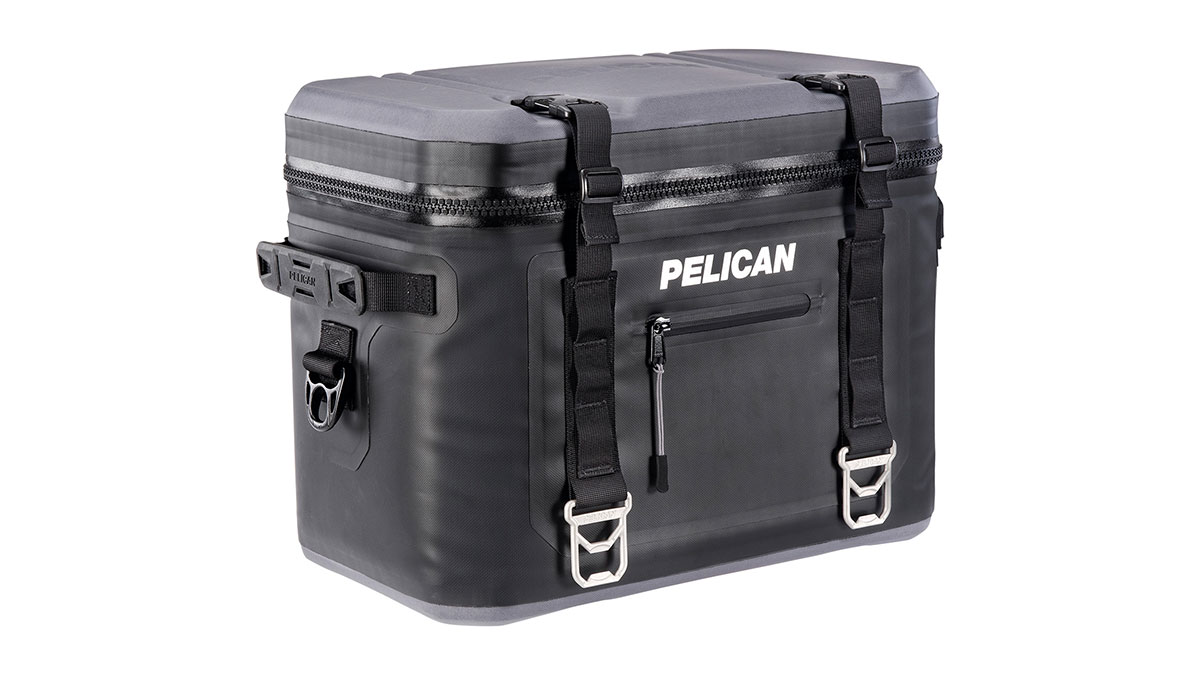Anyone who spends a good amount of time in the outdoors will tell you that if two things matter much more when you’re far afield than they do back in civilization, these are weight and food. When it comes to weight, you want to avoid it; the fewer pounds in your pack, canoe, or loaded into your truck, the better. When it comes to food, you want to preserve it; there are precious few grocery stores in the wilderness, so the food you bring in with you or that you manage to gather or catch while in the wild is all you can count on. (This is true even if by “food” you mean “beer,” by the way.)
But that doesn’t mean you have to settle for nothing but trail mix and packets of dehydrated beef stroganoff; it just means you need to use a cooler that’s well-made enough to endure the rigors of the campsite or the canoe trip, and that’s lightweight enough not to be a burden. Drumroll for the…
Pelican 24-Can Elite Soft Cooler

As you can probably surmise, this cooler has a 24-can capacity. That also translates to just under 24 liters of space within, which is more than enough room for storing many days’ worth of meats, cheeses, eggs, and other foods that tend to do well with refrigeration. And yes, I mean days: the Pelican SC24 cooler will keep ice frozen for up to 48 hours, even in the middle of the summer, and can keep foods cool for a day or two beyond that, especially if you use large cold packs.
The cooler weighs five pounds, which is more weight than you’ll want to carry along on a backpacking trip, but is almost negligible when tucked into a canoe or packed into the back of your vehicle. It’s also a soft-walled unit, so it can be crammed among duffels, tackle boxes, and other whatnot, yet its 26-mm thick high-density closed-cell foam walls provide enough support to keep the contents from being crushed unless someone pretty much jumps on top of the SC24.
The Pelican cooler seals securely with a zipper, but can also be closed over using a pair of clips that allow for much more convenient access, albeit with a weaker barrier against exterior temperature. Speaking of the exterior, the Pelican SC24 is covered with puncture-resistant “84-denier double-coated Thermo-Plastic Urethane,” which is a fancy way of saying it’s waterproof and resists scratches.

The exterior also features a small stash pocket, two built-in bottle openers, and four strips of nylon webbing perfect for attaching sundry gear items such as lures and bait. And if you choose to use this cooler to hold the fish you catch, not only will it preserve them well, but you’ll be glad its FDA food-grade liner is waterproof, washable, and doesn’t hold odors.
My one complaint about this cooler is the lack of a carrying handle on the top. It’s lightweight and compact enough that it would be easy to carry the cooler with one hand even when it was filled, but the lack of a handle placed in the middle of the top makes this impractical/impossible. Oh well.

And yes, you will pay well over $200 for a Pelican Elite Soft Cooler, but you will also likely have this cooler for the next decade or two. Think of it as an investment in future preserved meats, chilled beverages, and snowballs comically toted down from the mountains and used to attack friends when they least suspect it. (Ideally they will be on an LA beach playing volleyball at the moment you strike. At least that’s what I did, and it worked pretty damn well. True story, bro.)




